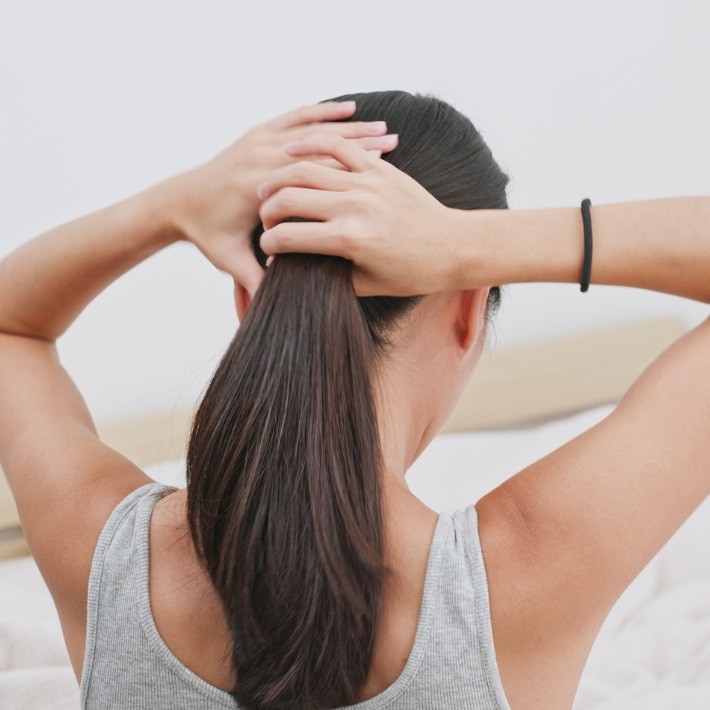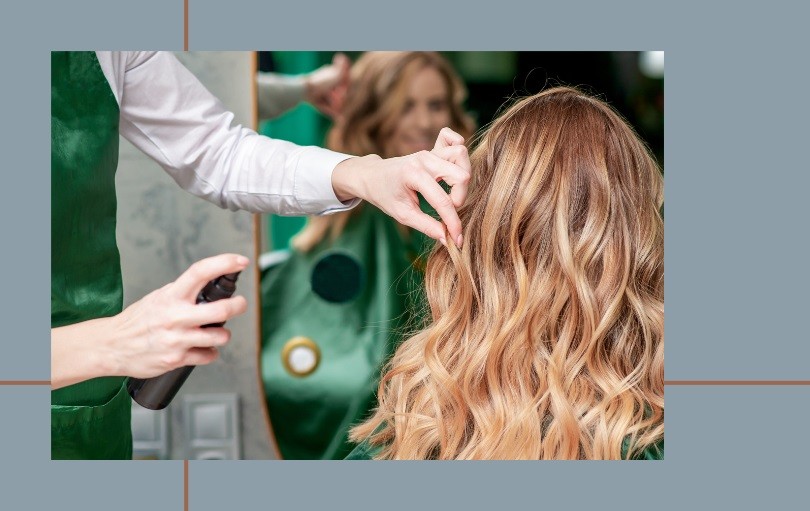Last Updated on January 22, 2025
Dermaplaning has been taking the skincare world by storm, thanks to its ability to exfoliate and rejuvenate the skin. But with the buzz comes a slew of questions and misconceptions, particularly about its impact on hair growth. The main question on everyone’s mind is: Does Dermaplaning make hair grow back thicker? This article aims to bust the myth and give you a complete understanding of this skincare treatment.
Does Dermaplaning Make Hair Grow Back Thicker?

The short answer is: No, dermaplaning does not make hair grow back thicker. This popular misconception stems from people confusing dermaplaning with shaving. Unlike traditional shaving, which can create a blunt edge on hair, making it appear thicker when it grows back, dermaplaning involves using a specialized scalpel to gently scrape away dead skin cells and fine hair (vellus hair) without impacting hair growth or texture.
Related: Does Hair Bleach Expire?
The Science Behind Hair Growth
To understand why dermaplaning doesn’t make hair grow back thicker, let’s take a closer look at the science of hair growth. Hair grows from hair follicles embedded deep in the skin. The follicle has three main phases: the anagen (growth) phase, the catagen (transition) phase, and the telogen (resting) phase.
Dermaplaning only affects the superficial layer of the skin and does not reach the hair follicle. Therefore, it cannot impact the natural growth cycle or thickness of the hair.
Benefits of Dermaplaning
Now that we’ve debunked the myth of thicker hair growth, let’s dive into the many benefits of dermaplaning:
- Exfoliation: Dermaplaning removes dead skin cells, revealing a fresher, more radiant complexion.
- Smoother skin: By removing fine hair and dead skin cells, dermaplaning leaves your skin feeling silky smooth.
- Better product absorption: With dead skin cells gone, your skincare products can penetrate deeper, making them more effective.
- Reduced appearance of fine lines: The exfoliation process can also help minimize the appearance of fine lines and wrinkles.
- No downtime: Unlike other facial treatments, dermaplaning requires no recovery time, making it a convenient option for busy individuals.
Potential Drawbacks
While dermaplaning offers numerous benefits, it’s essential to be aware of potential drawbacks:
- Temporary redness: Some individuals may experience redness or irritation following the treatment, though this usually subsides within a few hours.
- Not suitable for everyone: Dermaplaning is not recommended for those with active acne, sensitive skin, or certain skin conditions.
Related: How To Get Silly Putty Out Of Hair?
How is Dermaplaning Performed?
Dermaplaning is performed using a sterile, single-use scalpel held at a 45-degree angle to the skin. A skilled esthetician or dermatologist gently scrapes the skin’s surface, removing dead skin cells and fine hair. The procedure typically takes 30-45 minutes and is generally painless.
Professional vs. At-home Dermaplaning
While professional dermaplaning is performed by a trained and licensed professional, at-home dermaplaning kits are available for purchase. These kits often include a dermaplaning tool, which is typically less sharp than the professional scalpel. It’s essential to follow the manufacturer’s instructions carefully and consider the potential risks associated with DIY dermaplaning, such as uneven exfoliation, irritation, or even injury. For the best results and safety, it’s always recommended to have dermaplaning performed by a qualified professional.
How to Care for Your Skin After Dermaplaning
Taking proper care of your skin post-dermaplaning is crucial to maximizing the treatment’s benefits and maintaining a healthy complexion. Here are some tips to keep in mind:
- Moisturize: Apply a hydrating moisturizer immediately after dermaplaning to soothe and nourish your skin.
- Sun protection: Since your skin will be more sensitive after exfoliation, make sure to wear broad-spectrum sunscreen with an SPF of at least 30.
- Avoid harsh products: Skip any products containing harsh ingredients, like retinoids, glycolic acid, or benzoyl peroxide, for a few days after treatment to prevent irritation.
- Be gentle: Give your skin time to heal by avoiding scrubs, peels, or other exfoliating treatments for at least a week.
Dermaplaning vs. Other Exfoliation Techniques
When it comes to exfoliation, dermaplaning is just one of the many options available. Let’s take a closer look at how dermaplaning stacks up against other popular exfoliation techniques.
Chemical Peels
- Mechanism: Chemical peels use acids to dissolve dead skin cells while dermaplaning physically scrapes them away.
- Suitability: Chemical peels come in various strengths, making them suitable for different skin types. Dermaplaning, on the other hand, is not recommended for those with active acne or sensitive skin.
- Downtime: Chemical peels often require some downtime for recovery, while dermaplaning has no downtime.
- Results: Both chemical peels and dermaplaning can improve skin texture, but chemical peels may be more effective at treating hyperpigmentation and acne scars.
Microdermabrasion
- Mechanism: Microdermabrasion uses tiny crystals to exfoliate the skin, while dermaplaning relies on a scalpel.
- Suitability: Microdermabrasion is safe for most skin types but may not be suitable for those with sensitive skin or rosacea. Dermaplaning shares similar suitability concerns.
- Downtime: Both microdermabrasion and dermaplaning have minimal to no downtime.
- Results: Both treatments can improve skin texture and promote a radiant complexion, but dermaplaning also removes fine hair, which microdermabrasion does not.
Related: How To Get Sand Out Of Hair?
Preparing for Your Dermaplaning Appointment

To ensure the best results from your dermaplaning treatment, it’s essential to properly prepare your skin and follow any instructions provided by your skincare professional. Here are some steps to consider:
Avoid Exfoliation
- Why: Over-exfoliating can cause irritation and damage to your skin, so it’s crucial to avoid using other exfoliants before your dermaplaning appointment.
- How: Stop using any physical or chemical exfoliants, such as scrubs, brushes, or acids, for at least a week before your treatment.
Keep Your Skin Clean
- Why: Arriving at your appointment with clean skin ensures that your esthetician can perform the treatment effectively and without any interference from dirt, oil, or makeup.
- How: Wash your face thoroughly before your appointment, removing all makeup and using a gentle cleanser.
Discuss Your Skin Concerns
- Why: Communicating with your skincare professional about any concerns, allergies, or skin conditions will help them determine the best course of treatment for your unique needs.
- How: Be open and honest about your skin history and any issues you may be experiencing, and don’t hesitate to ask questions or voice concerns.
Follow Pre-Treatment Instructions
- Why: Your esthetician may provide specific pre-treatment instructions to help ensure the best results from your dermaplaning session.
- How: Listen carefully to any guidance provided by your skincare professional and be sure to follow their recommendations.
Frequently Asked Questions
1. How often should I have dermaplaning done?
Dermaplaning is generally safe to have done every 4-6 weeks. This allows your skin to complete its natural exfoliation cycle and prevents over-exfoliation.
2. Can I wear makeup after dermaplaning?
It’s best to wait at least 24 hours after dermaplaning before applying makeup. This gives your skin time to recover and helps prevent potential irritation.
3. Is dermaplaning safe for all skin types?
Dermaplaning is suitable for most skin types, except for those with active acne, sensitive skin, or certain skin conditions. It’s always a good idea to consult with a skincare professional before undergoing any treatment.
4. Does dermaplaning hurt?
Dermaplaning is generally painless when performed by a trained professional. You may feel a slight scraping sensation, but it should not be uncomfortable or painful.
5. Are there any risks associated with dermaplaning?
While dermaplaning is considered a low-risk treatment, some potential risks include temporary redness, irritation, or uneven exfoliation. To minimize these risks, it’s essential to have dermaplaning performed by a qualified professional and follow proper aftercare instructions.
The Final Word: Smooth Skin, Not Thicker Hair
The notion that dermaplaning makes hair grow back thicker is nothing more than a myth. Instead, this skincare treatment offers a range of benefits, such as smoother skin, better product absorption, and reduced appearance of fine lines. If you’re considering dermaplaning, consult with a skincare professional to determine if it’s the right choice for you. With proper care and a skilled esthetician, you can enjoy the benefits of dermaplaning without worrying about thicker hair growth.

